The Nambu pistol is one of the most famous military arms to come out of Japan.
Its distinct looks, military history, and background make the Nambu an interesting historical collector’s piece for enthusiasts.
So, what is the Nambu pistol, and why are people drawn to it?
Well, there are a few different versions of the Nambu pistol, so we will look at each of these iterations to get the story on this intriguing firearm.
Table of Contents
Loading…
The Origins
The pistol derives its name from Japanese firearm designer Kijirõ Nambu. Sometimes referred to as the “John Browning of Japan,” Nambu was known for his success and innovation as a firearm designer.
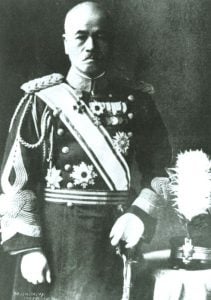
Owing to its distinct looks and wartime usage, the Nambu pistol is probably his most recognized design, at least in the United States.
In an effort to replace the Type 26 revolver, the Nambu was first developed ahead of World War I. It was produced by Koishikawa Arsenal, which would later be renamed Tokyo Artillery Arsenal.
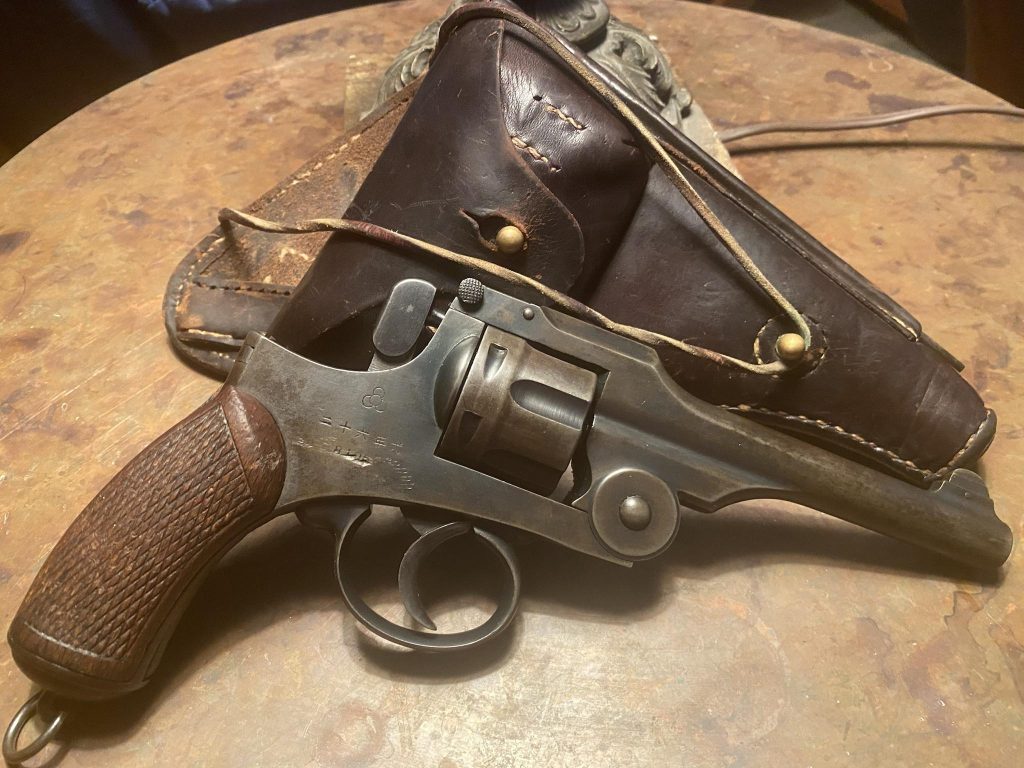
Unfortunately, due to the destruction of records at the end of World War II, there’s not much production information about the Nambu.
Despite this, or perhaps even because of this, many history buffs and firearms collectors seek out the Nambu pistol.
Type A
The Type A, also billed as the Type 4, was the prototype of the Nambu pistol. Among collectors, it’s commonly referred to as the Grandpa Nambu because it’s the original iteration.
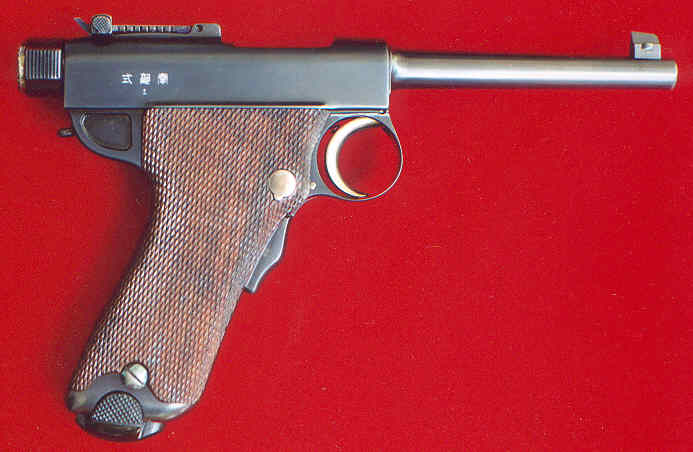
It utilized a recoil-operated and locked-breech and weighed in at 31.7 ounces with a 4.6-inch barrel.
Chambered in 8x22mm Nambu, the Type A had stopping power similar to .380 ACP. While on par for the era, by the time World War II came around, the cartridge was notably weaker than its contemporary counterparts, such as the 9mm Luger, .45 ACP, and 7.62×25 Tokarev.
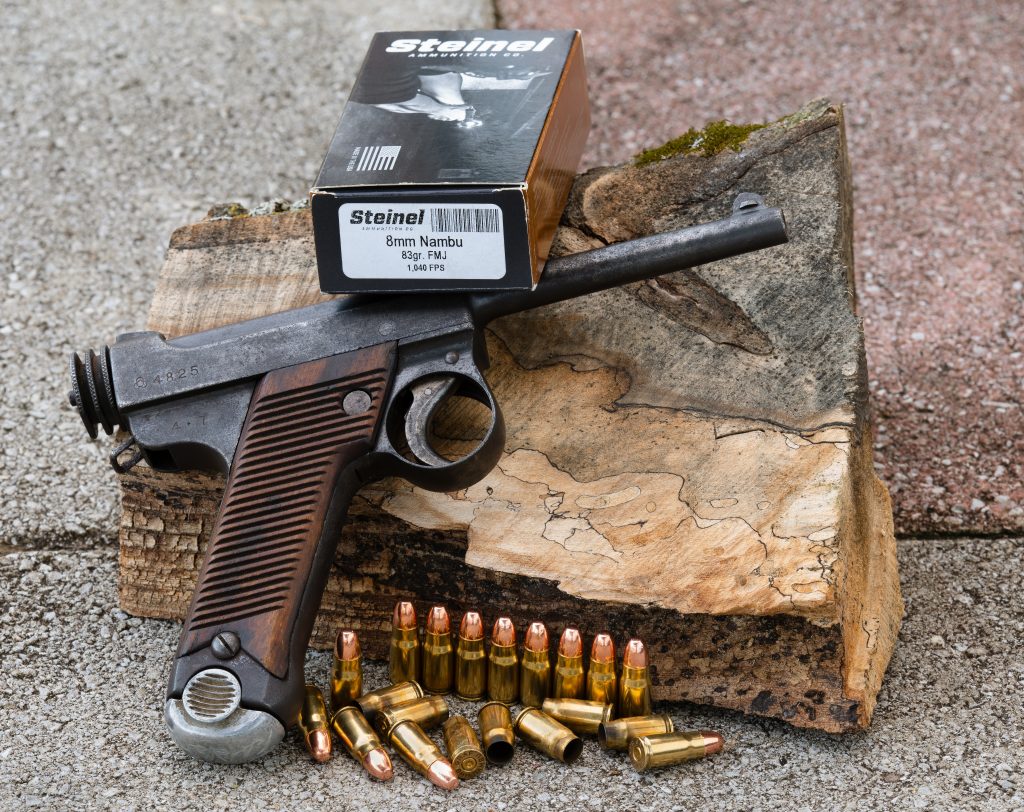
The Type A was completed in 1902 but was never adopted by the Japanese military, and few were ever produced. The Grandpa Nambu was expensive to manufacture, which was reflected in its high selling price.
Japanese Army officers had to pay for their own pistols, and the cost of purchasing one led to very little use.
Despite this, the Type A Modified, called the Papa Nambu by collectors, was created.
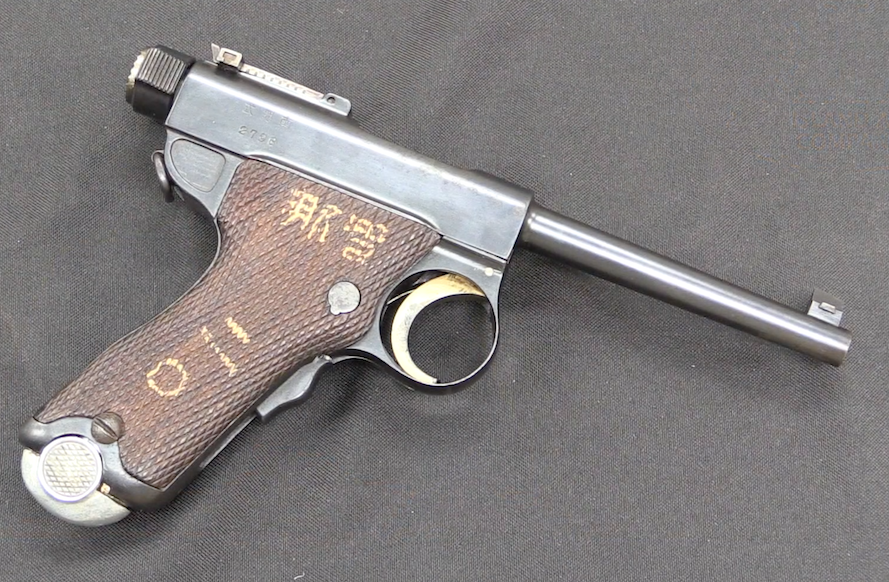
It only had a few differences from the original Type A. These included an enlarged trigger guard, lanyard loops in rings rather than welded loops, and aluminum bottoms on the magazines rather than wood.
Type B
The Type B was based on the Type A — but with a few improvements. Collectors call it the Baby Nambu since it’s about three-quarters the size of its predecessor.
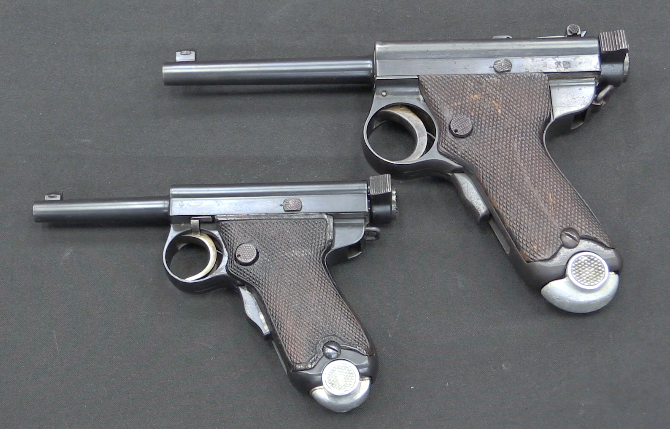
Aside from stepping down in physical size, the gun was also chambered in 7x20mm Nambu instead of 8x22mm. This was an even weaker cartridge – generating less than 100 ft/lbs of energy.
Early pistols (the first 450 or so) had wooden bottom magazines, like the original Type As, and a single-diameter firing pin. After that, they used aluminum magazine bottoms and multiple-diameter firing pins.
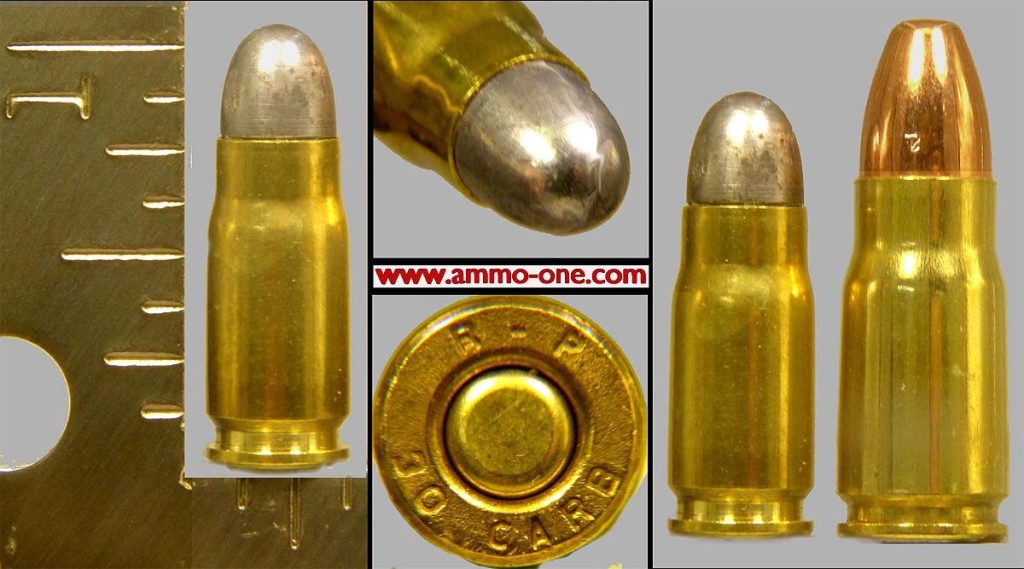
Almost all Type Bs were bought by Japanese Army officers, but the cost was still too high for widespread adoption.
Type B Nambus were about twice the cost of foreign-made pistols imported into the country. They cost about 180 yen at a time when a second lieutenant’s monthly salary would have been around 70 yen.
It was adopted by the Imperial Japanese Navy and Royal Thai Army in the 1920s, but it was mainly issued as a status symbol in Japan.
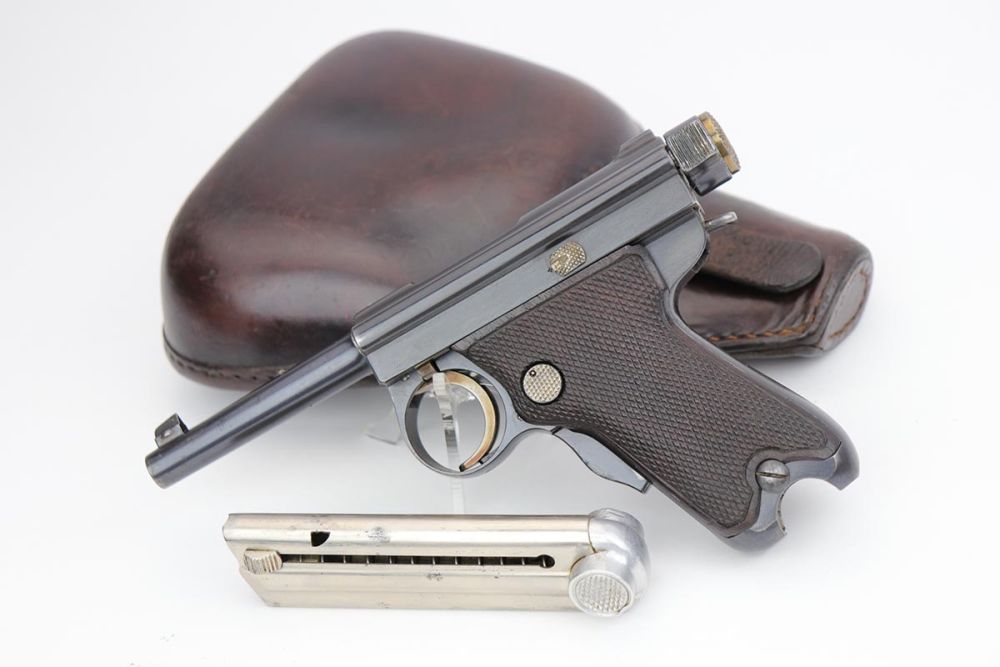
Primarily given to people who weren’t likely to see combat, it was really only intended for personal protection or, if captured by the enemy, suicide in accordance with Japanese military policy at the time.
Production of the Baby Nambu stopped in 1923, but pistols were assembled from existing parts until about 1929.
Type 14
The Type 14, introduced in 1925, is the most recognizable and sought-after version of the Nambu pistol — and perhaps Kijirõ Nambu’s most successful design.
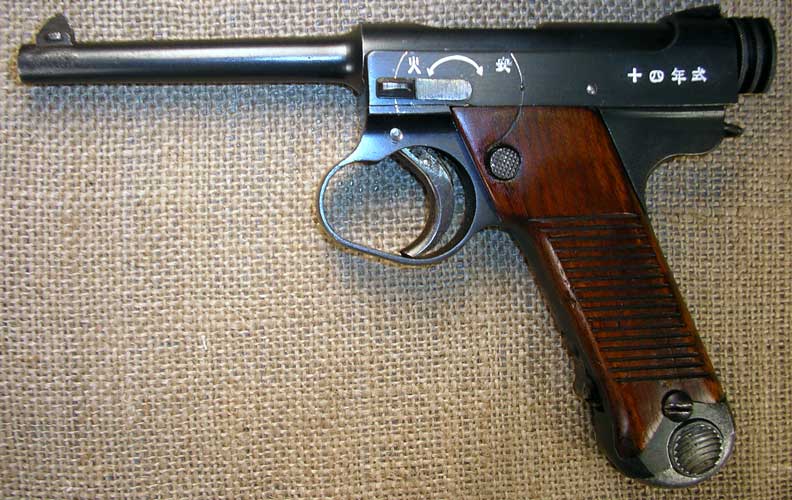
With the Type 14, Koishikawa Arsenal effectively managed to reduce the production cost, making the pistol more accessible to consumers.
The military adopted it for non-commissioned officers in 1928, but commissioned officers still had to buy their own pistols.
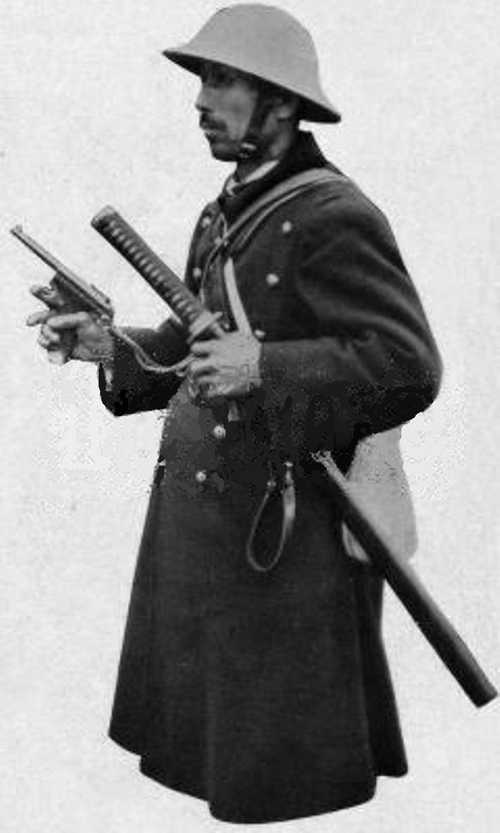
Like the Type A, Type 14 was chambered in 8x2mm, leaving the anemic 7x20mm cartridge behind.
Pre-World War II pistols were particularly well made. In fact, Bill Ruger of the eponymous Ruger firearms company liked the Type 14 so much that he based his original Ruger Standard Auto Pistol on the same profile.
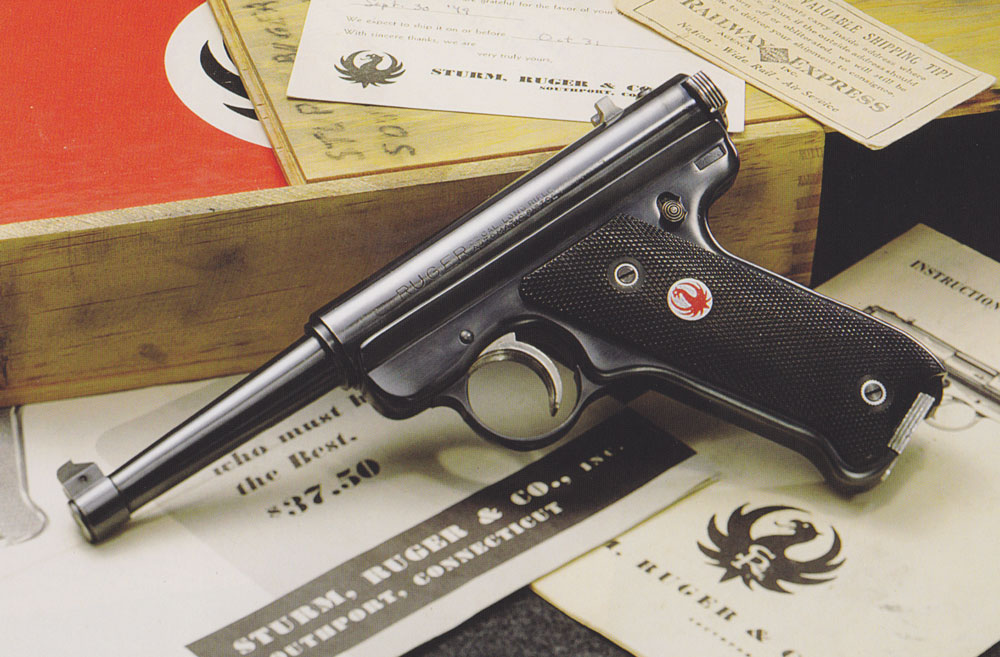
However, as the war put a strain on resources, manufacturing quality rapidly declined.
Each pistol has the year and month of manufacture marked, so it’s easy for collectors and historians to tell exactly when each pistol was made, despite the lack of surviving records.
Production of the Type 14 ended with the conclusion of World War II, but about 200,000 Type 14 pistols were made, making it the most common version of the Nambu pistol by far.
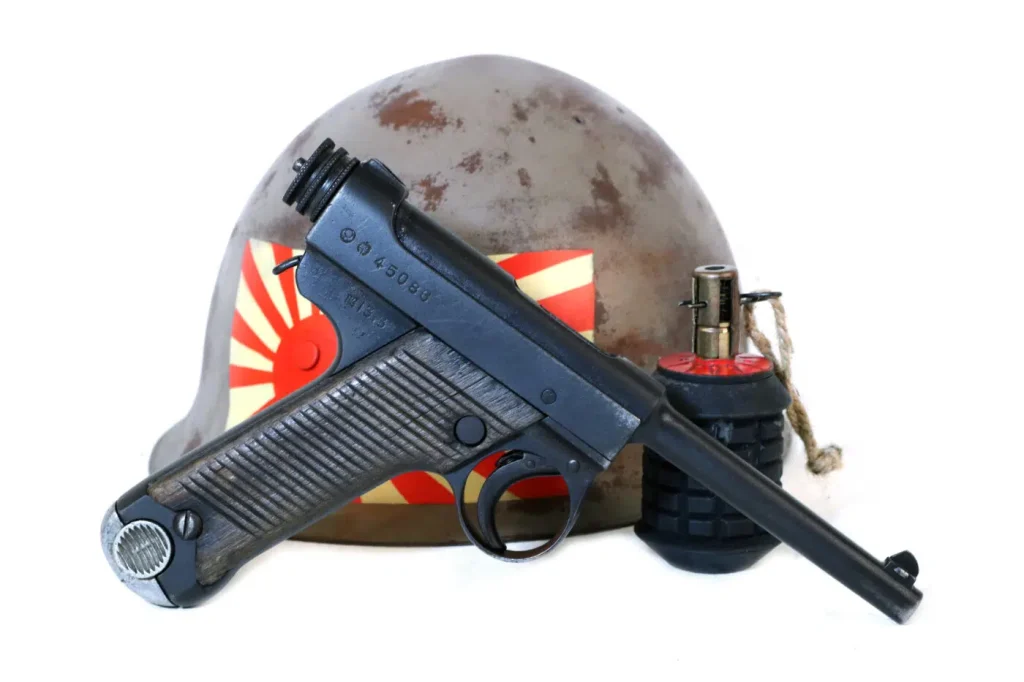
Because of its iconic reputation and widespread use in World War II, it pops up in media depicting the Japanese military during that time quite a bit.
Notably, it appears in the films Pearl Harbor and Letters from Iwo Jima, and the TV shows The Man in the High Castle and Archer.
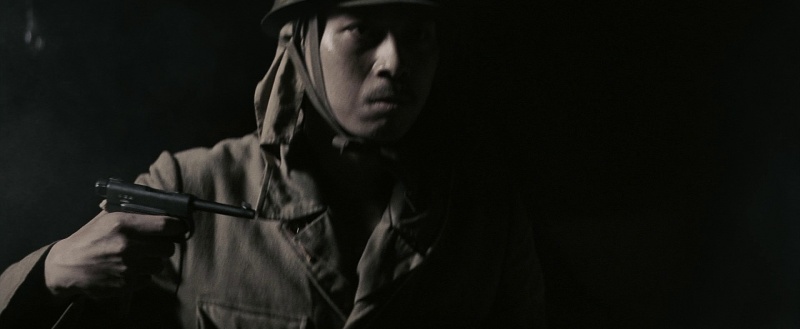
Outside of the World War II context, Cara Dune uses a modified Nambu pistol in The Mandalorian.
Type 94
The last variant of the Nambu pistol is the Type 94.
It rivals the Type 14 in notoriety. In fact, it may be even more famous…well, infamous. In fact, the Type 94 is known for being a just plain awful gun.
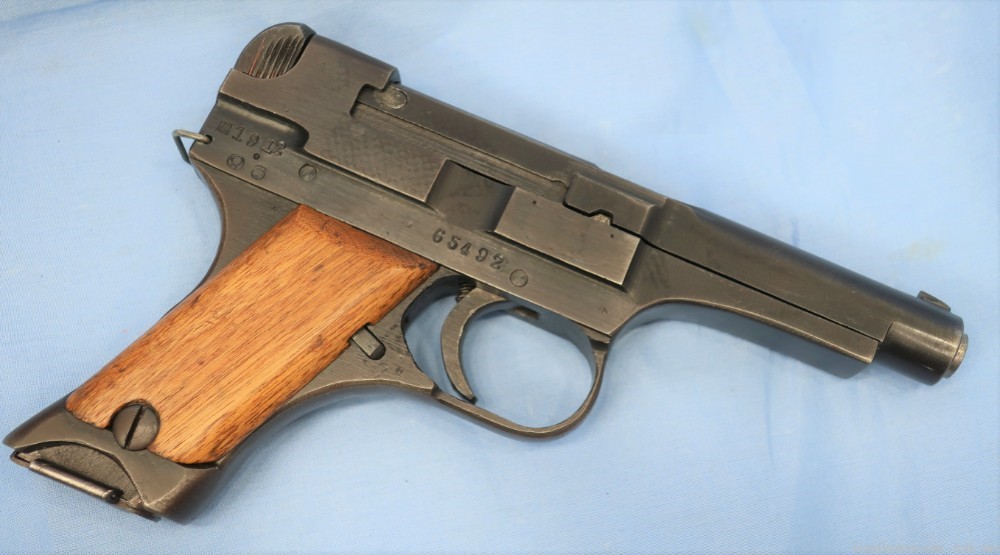
American servicemen called this version of the Nambu pistol the “suicide gun” because its low-quality manufacturing made the gun prone to malfunctioning in dangerous ways, including being discharged when being holstered or bumped on the side.
Like the Type A and Type 14, the Type 94 was chambered in 8x22mm. However, it was more compact than either of those two versions, with a 3.78-inch barrel and a 6-round detachable magazine.
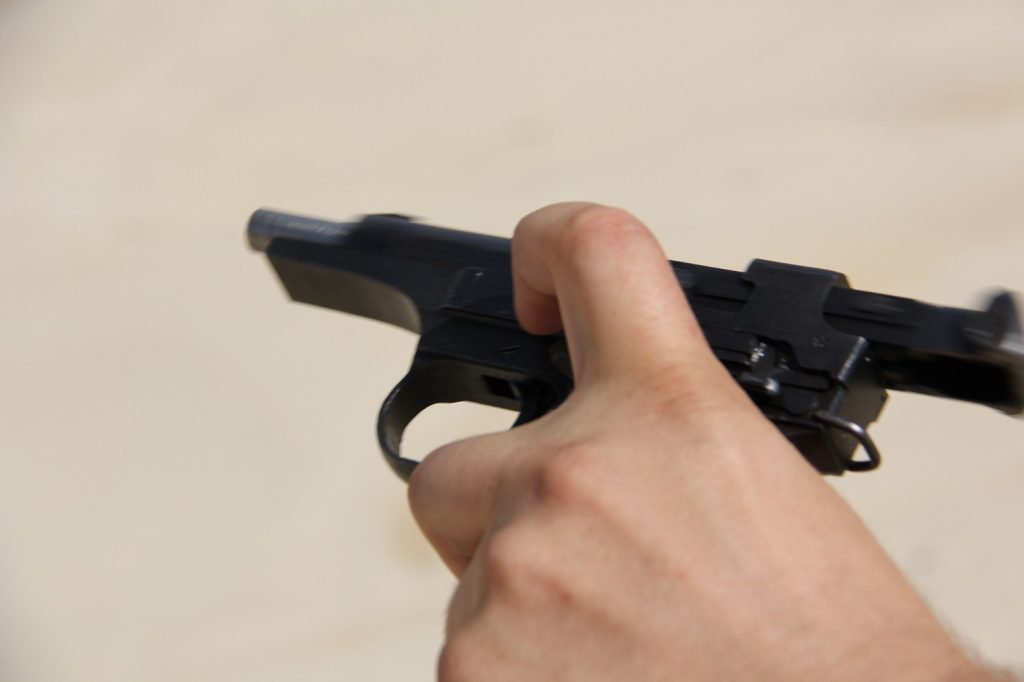
It was produced from 1935 to 1945, and the stresses of peak wartime production were reflected in the lackluster build quality. Only about 71,000 Type 94 pistols were produced,
Despite being rarer, the Type 94 is still worth only a fraction of what the Type 14 is due to its poor quality and unattractive looks.
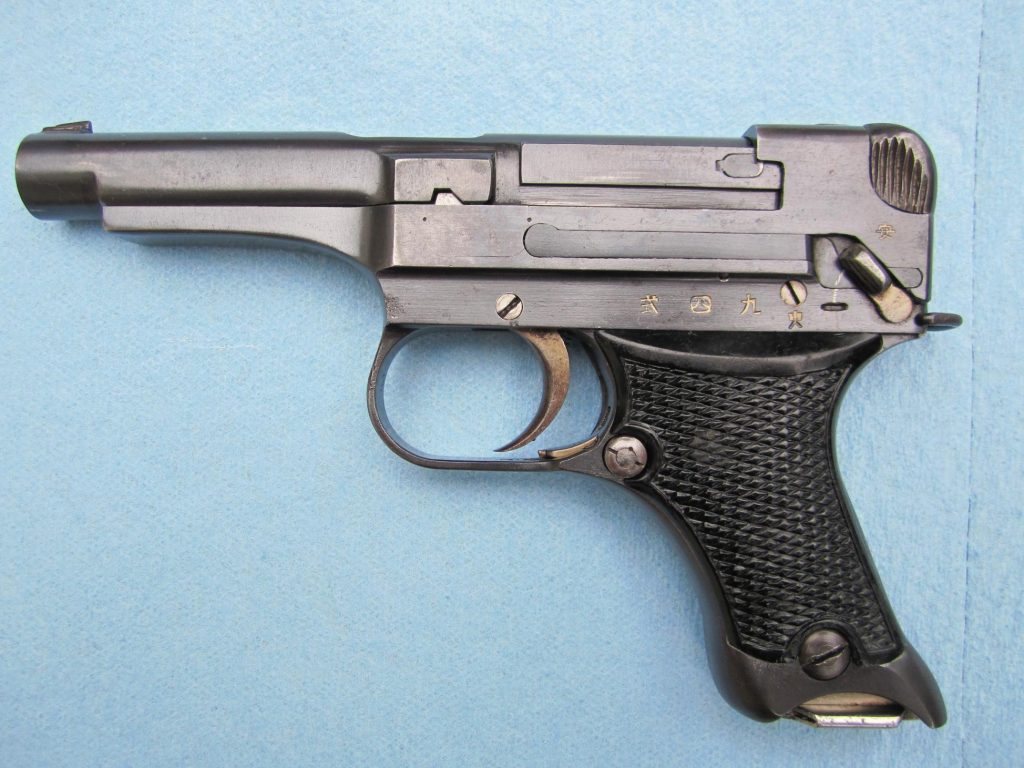
That said, it is still sought after by some collectors because of its curious and controversial history. The contrast between the Type 94 and early Type 14s is especially stark.
Prices accurate at time of writing
Prices accurate at time of writing
-
25% off all OAKLEY products - OAKLEY25
Copied! Visit Merchant
Final Thoughts
Nambu pistols will pop up on auction sites sometimes, but they’re typically not guns one buys to shoot. Most are collector’s items, with the Type 14 remaining both the most common and the most sought-after.
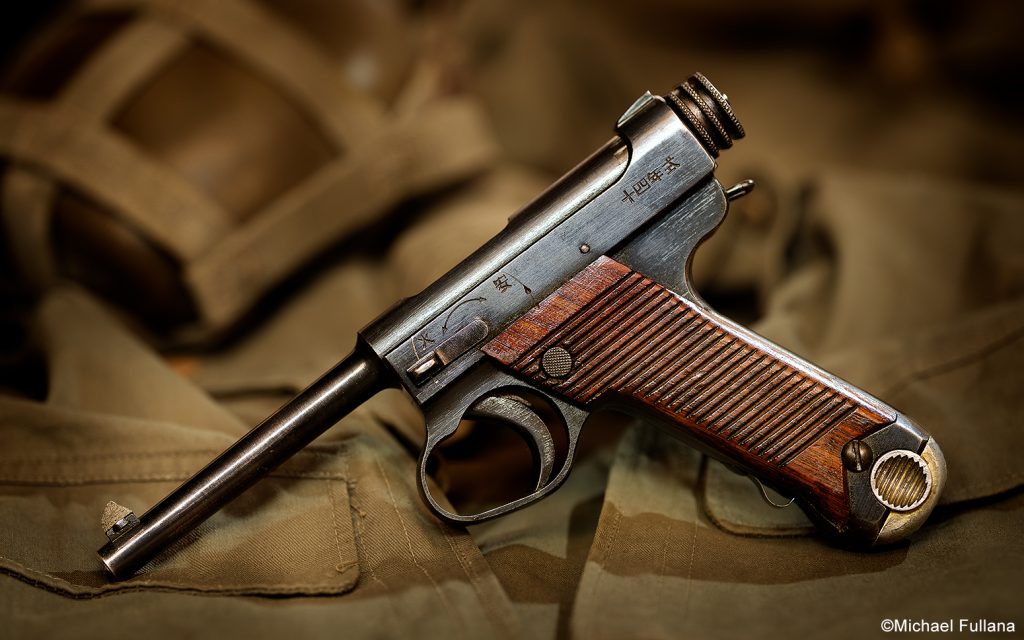
They’re more like collectibles — you buy one for the bragging rights and pleasure of owning one.
But sometimes, that is what guns are all about, fun conversation and collector’s pieces, and the Nambu definitely falls into that category.
What are your thoughts on the Nambu pistols? Let us know in the comments below. Interested in other World War pistols? Check out our article, the Luger Pistol: The Most Famous German 9mm.

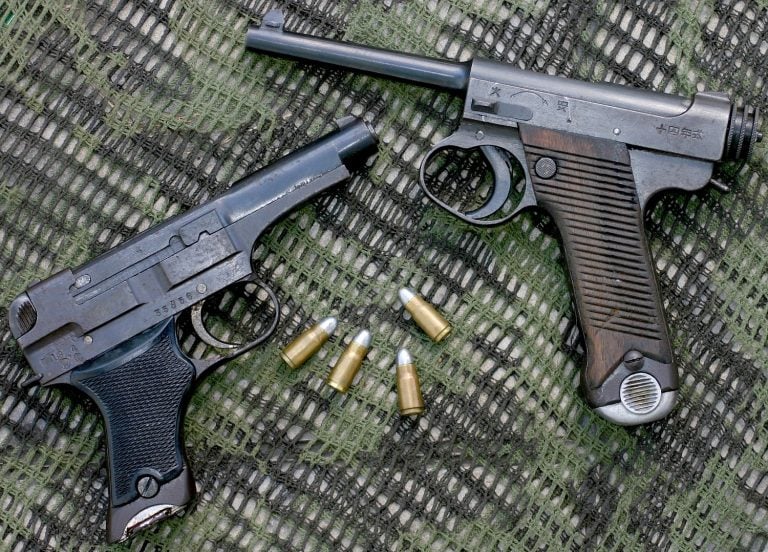
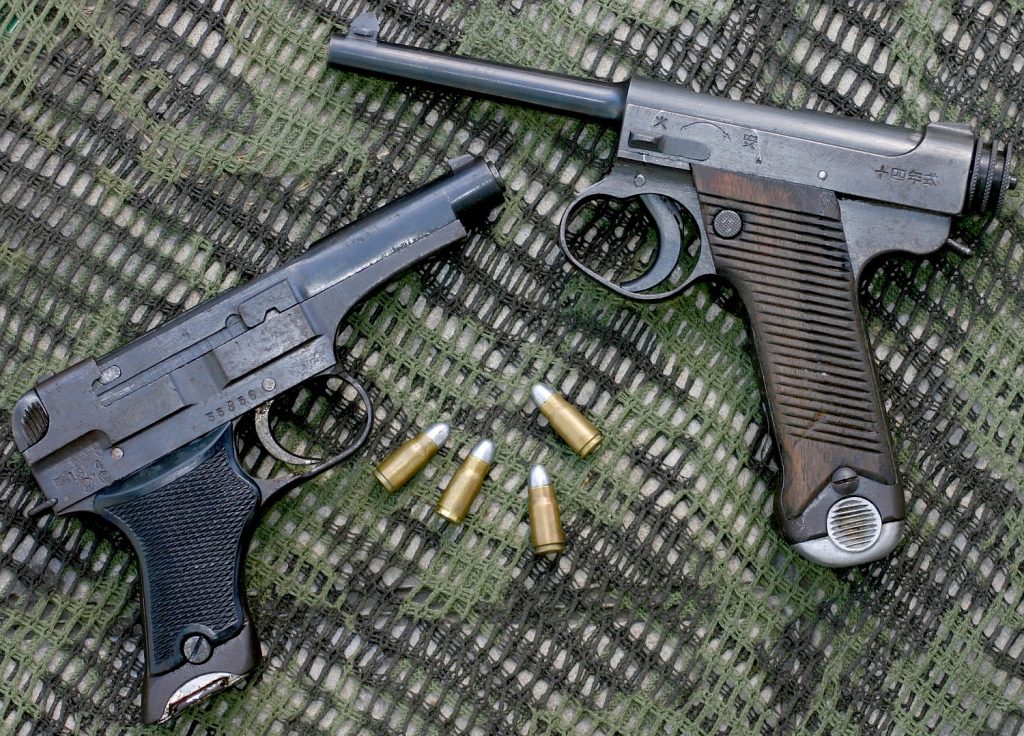

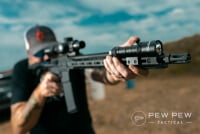






5 Leave a Reply
Thanks Megan. Great explanation of the Japanese Nambu type 14. Big fan of the gun.
Had to chuckle when I first started reading this article thinking this gun looked a lot like my Ruger Auto Pistol and poof Bill Ruger pops up half way through this piece. (Bought my Ruger in 1975, first pistol I bought still have it to.)
I've got a Nambu Type 14. Dad took it off a Japanese troop in WWII and left it to me with the rest of his gun collection.
Ruger got it right
That does look like a fun plinker to have on a wall and turn some heads at the range